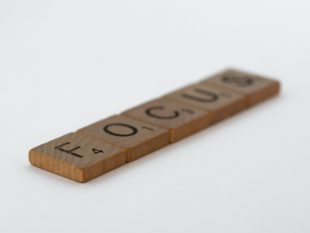ADHD in Children: What to Look For
Christian Counselor Spokane
Attention-Deficit Hyperactivity Disorder (commonly known as ADHD) is a mental health condition that typically starts during childhood. Symptoms start appearing before the age of 12 and can last through adulthood. Unfortunately, the symptoms often mirror rambunctious three and four-year-old preschoolers’ behavior, so how can you tell if your child exhibits ADHD behaviors?
 ADHD in Children
ADHD in Children
William was the apple of his mother’s eye. As an only child of a single mother, he ran in and out of her shop all day. He was brilliant for a second-grader, but his mother noticed that his grades didn’t seem to reflect this.
Taking William by the hand, she made an appointment with his teacher. Imagine his mother’s surprise when the teacher commented about William’s distracted mind, not completing his work in class, losing papers and items, and constantly being called down for leaving his seat.
William’s mother mentioned this to the pediatrician. After questioning her for quite some time, his mother had to admit that William often fidgeted and was always on the go. He did interrupt others and hated to wait his turn at the playground. William’s mother just believed this was usual behavior for a boy his age. She didn’t have any other children for comparison.
William’s case is like so many others. However, it takes a professional to diagnose a mental health condition, including ADHD. William’s teacher recognized the symptoms, but she could only speculate.
A psychiatrist or other mental health specialist will rule out medical reasons for the child’s behavior, and then following diagnostic testing, make an assessment. The child must exhibit at least six of the following symptoms over six months to be considered demonstrating ADHD behavior.
Inability to Focus
One of the marked symptoms of ADHD is the inability to focus. Being easily distracted is a well-known symptom. Although the child might have an important report due, their mind cannot seem to stay on the task. Multitasking is difficult and should probably be avoided. If your child has problems completing assignments, try breaking the workload into smaller chunks of time.
 The Pomodoro Technique is a strategy you can use to help your child focus their mind long enough to complete an assignment (or any task). With the original method, you focus on your task for 25 minutes, then take a five-minute break. Depending on your child’s age, you can shorten this focus time to 10 or 15 minutes. A child can accomplish a lot when their focus is on one thing.
The Pomodoro Technique is a strategy you can use to help your child focus their mind long enough to complete an assignment (or any task). With the original method, you focus on your task for 25 minutes, then take a five-minute break. Depending on your child’s age, you can shorten this focus time to 10 or 15 minutes. A child can accomplish a lot when their focus is on one thing.
Lack of Patience
Children exhibiting ADHD symptoms have little patience. It is difficult for them to wait their turn either at the playground or in a doctor’s office. They may interrupt others, including teachers, and speak out of turn. This can cause conflicts with other children and problems in the classroom.
A therapist can teach your child the needed communication skills to overcome this impatience. As the parent or guardian, you will probably be asked to encourage your child’s waiting their turn to speak or act.
Not Completing or Avoiding Tasks
Not completing or avoiding tasks could go back to being distracted; however, it can also include simply not listening. Sometimes the distractions are not other tasks or “shiny objects,” but thoughts in their head. A child can look at you while you give a list of things to do (or not to do) and not actually hear a word you are saying (although they might nod their head as you speak).
Daydreaming and intrusive thoughts (or loud thoughts) can keep a child’s mind busy and distracted. Therapy can help the child to catch these thoughts and bring their attention back to the present.
Forgetting or Losing Things
Important school papers, permission slips, expensive devices, glasses, and house keys are some of the everyday items a child with ADHD symptoms might lose. It is not the child’s fault as a distraction can have the child leaving things in the wrong place. It is mentally draining to stay hyper-aware of your surroundings and actions, yet a child with ADHD may be doing just that until they learn management techniques.
 Help your child by providing a place for everything and reminding them often. If your older child has a phone, place a tracking app on it so they can find it easily. You can also use their phone to set alarms reminding them to put their schoolwork in their backpack and house keys on the hook by the back door.
Help your child by providing a place for everything and reminding them often. If your older child has a phone, place a tracking app on it so they can find it easily. You can also use their phone to set alarms reminding them to put their schoolwork in their backpack and house keys on the hook by the back door.
Fidgeting or Restlessness
What was once scorned as a distracting behavior now appears to have an outlet. Fidgeting and restlessness are behaviors commonly seen in ADHD. More classrooms and other settings allow children with ADHD to have “fidgets.” These devices help the child to focus and stay on task. Fidgets are handheld items that look like toys. The child can use the item on autopilot (spinning or working through the fingers of one hand) while working quietly in class.
Toys are considered a distraction, but for children with ADHD, this can help focus their minds, and many of these children want to do well in school and are willing to try a fidget.
Physical fidgeting and restlessness are behaviors that therapy can teach the child to overcome or direct into more constructive use.
Disorganization
Organizational skills are life skills that your child can use in any area. Children with ADHD struggle with organization and need help. You may have witnessed this in the workplace. Two people might share a smaller office. One of the people is disorganized but excels in other areas such as sales. The other person handles all of the filing and appointments; thus, the pair can become the most successful in the entire office.
The same scenario applies to children. As your child works with a therapist on organizational skills, help them sort their homework. Keep track of their assignments and grades. It can be an inconvenience after a long day at work but show your child that they can get their schoolwork under control by following a system.
 Cannot Sit or Play Quietly for Long Periods
Cannot Sit or Play Quietly for Long Periods
Children with ADHD symptoms have an abundance of energy and no real outlet unless they can play. Even a playtime is often a loud event. Set specific times for your child to release as much energy as they can. You can offer indoor or outdoor areas. You may need to work with a counselor about ways to show your child that there is a time to play loudly and a time to play quietly. They may still struggle with this for a while.
Common Treatments for ADHD
The first step your therapist may want to try is behavior therapy. With behavior therapy, your child will learn ways to manage their time and their anger, learn organizational skills, identify when their behavior is “over the top,” and how to stay in control. Children who adapt quickly and with some guidance from the therapist and parents will overcome ADHD.
The counselor might want to work closely with your child’s school to ensure that they receive the best resources for the situation. Don’t hesitate to sit in these meetings. As the parent or guardian, no one knows your child better than you, and you can advocate for their care.
Just because a child is diagnosed with ADHD symptoms does not mean your child is destined for failure. Adults with ADHD who have learned to manage their symptoms are some of the hardest-working individuals because of their learned skills.
Family therapy is another treatment option that works well as the therapist can work with the parents to learn how to cope and minimize the symptoms of ADHD. The child (and parent) can also vent in a safe space. Teens with ADHD may find the symptoms more challenging as hormones make emotions stronger.
If your pediatrician or specialist diagnosis your child with ADHD, know that there is help. Attention-Deficit Hyperactivity Disorder is treatable. Your child is not a pariah, nor should they be treated that way. A faith-based counselor can help you learn to manage the symptoms of ADHD in children and teach your child time management, organizational skills, and patience.
“Splashing in the Puddles”, Courtesy of Nathan Dumlao, Unsplash.com, CC0 License; “‘Timbertown”, Courtesy of Annie Spratt, Unsplash.com, CC0 License; “Class”, Courtesy of CDC, Unsplash.com, CC0 License; “Focus”, Courtesy of Brett Jordan, Unsplash.com, CC0 License





